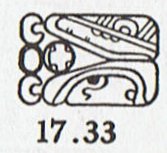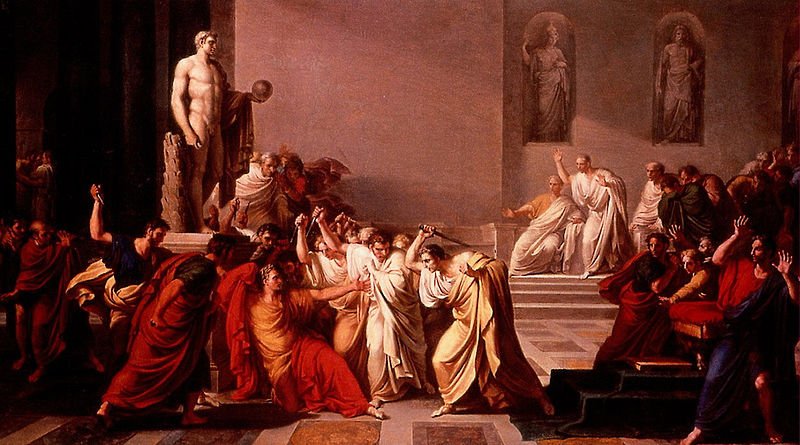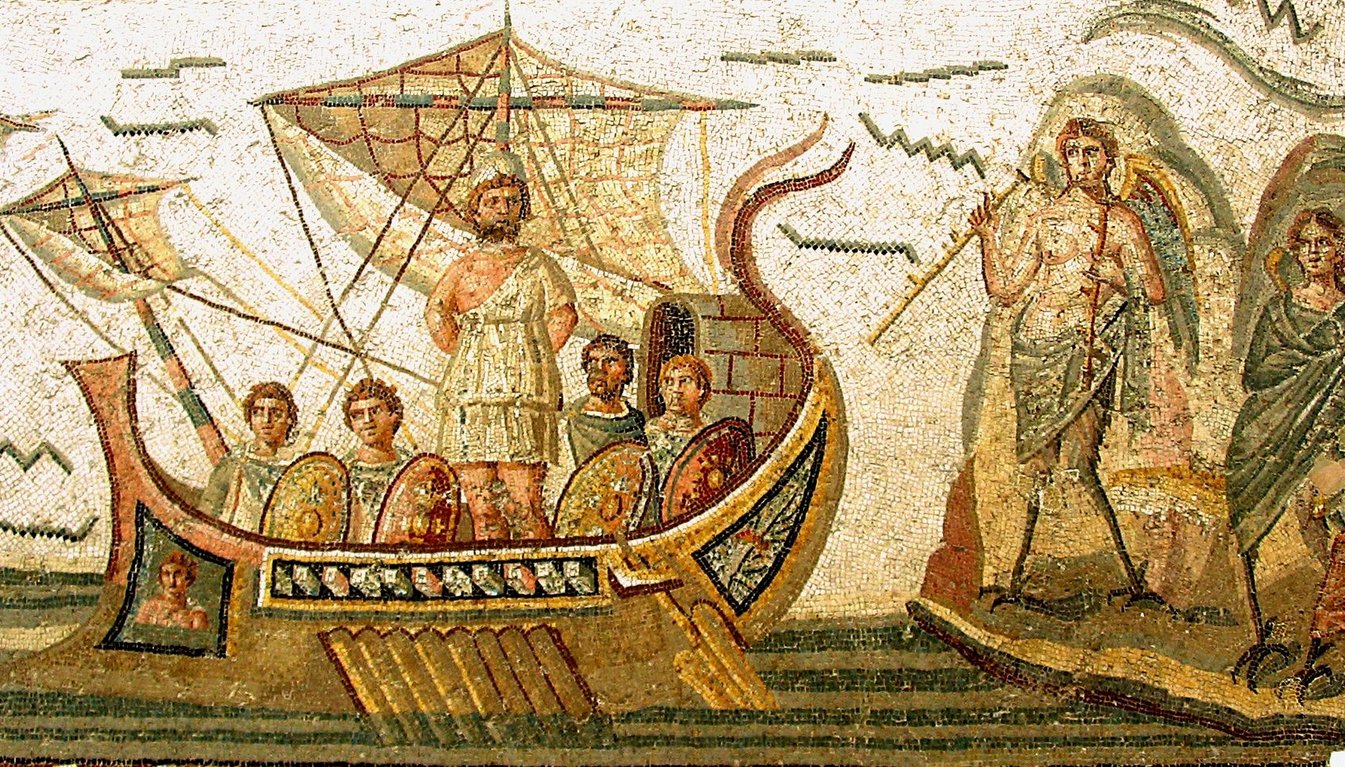10-4. We can now perceive how
possibly the
idea of a happy place of 'close embrace' between heaven and earth
(cfr at left in the image below) may have influenced the design of the triplet on the Phaistos
disc. During the night there was opportunity to
recover from the hardships of the agricultural working hours. It
was a hard living. In comparison the nights were like paradise.

 |
 |
 |
 |
12 |
 |
|
107 |
108 |
109 |
110 |
123 |
|
*312 |
*313 |
*314 |
π - 3.14 |
*328 |
|
Jan 27
(392) |
16 |
|
July 29 (210) |
|
Ea8-4 (260) |
no glyph |
ki te vai |
(te hupee) |
|
NASHIRA |

We can recall the way the Mayas described how
Sky and Earth departed
at the break of dawn:

The character of the E text changes with the arrival
of October 15 (288):
... On the fifteenth day of the
month of October (tangaroa uri), Nonoma left
the house [he ea mai roto i te hare] during
the night [i te po] to urinate outdoors [ki
kaho.mimi]. At this point Ira called out [he
rangi] to Nonoma, 'Look at the canoe!' Nonoma
ran [he tahuti], he quickly went to Te
Hiringa Heru (a ravine in the side of the crater
Rano Kau) and looked around. There he saw the double
canoe way out near the (offshore) islets [i te
motu o haho], and the two (hulls of the canoe)
were lashed together ... [E:75]
|
Oct 10 (→ 80) |
11 |
12 (285) |
13 |
14 |
|
71 VIRGINIS
(203.6) |
No star listed (204) |
HEZE = ζ Virginis
(205.0),
SOUTHERN PINWHEEL GALAXY = M83 Hydrae
(205.7) |
ε Centauri (206.3),
κ Oct. (206.4)
*165.0 = *206.4 - *41.4 |
No star listed (207) |
 |
 |
 |
 |
 |
 |
|
Eb1-4 |
Eb1-5 |
Eb1-6 |
Eb1-7 |
Eb1-8 |
|
te heu |
te inoino |
henua |
te maitaki |
te poporo |
|
Kino. 1. Bad; kikino,
very bad, cursed; kona kino, dangerous place.
2. blemish (on body). Kinoga, badness, evil,
wickedness; penis. Kinokino, badly made,
crude: ahu kinokino, badly made ahu, with
coarse, ill-fitting stones. Vanaga. 1. Bad, wrong. T
Pau.: kiro, bad, miserable. Mgv.: kino,
to sin, to do evil. Mq.: ino, bad,
abominable, indecent. Ta.: ino, iino,
bad, evil; kinoga (kino 1) sin; Mgv.:
kinoga, sin, vice. 2. A skin eruption,
verruga, blotched skin, cracked feet T. Churchill. |
|
April 10 (100) |
11 |
12 |
13 |
14 (104) |
|
KSORA (Knee) =
δ
Cassiopeiae
(20.1),
ω
Andromedae (20.6),
γ
Phoenicis (20.8) |
δ Phoenicis (21.5) |
υ Andromedae (22.9) |
ACHERNAR (End of the River) =
α
Eridani
(23.3),
χ
Andromedae (23.6),
τ
Andromedae (23.9) |
ALSEIPH (Scimitar) =
φ
Persei
(24.5),
τ
Ceti (24.7) |
 |
|
'March 14 |
15 |
16
(75) |
17 |
18 (104 - 27 = 77) |
|
... I
became interested in what really
happened at March 15 and reopened
Henrikson to find out: Caesar was
forewarned of the threat by the prophet
Spurinna, who told him that a great
threat was coming at Idus
Martiae or just before. The day
arrived and Caesar was still living. He
was walking to his meeting with the
Senate when he happened to encounter
Spurinna and told him jokingly that he
was still alive. Spurinna calmely
answered that the day had yet not ended.
The Romans divided their months in two
parts and the dividing point was Idus,
which in some way was connected with
full moon. March 15 was the midpoint of
March, which is close to spring equinox.
The old agricultural year defined the
beginning of the year to the time when
sun returned, and it was connected with
Mars ...
 |
|
"Febr 28 (59) |
"March 1 (60) |
2 |
3 |
4 (104 - 41 = 63) |
|
FEBR 5 (36) |
6 |
7 |
8
(414 → Bharani) |
9
(104 - 64 = 40) |
|
...
On February 9 the Chorti Ah K'in,
'diviners', begin the agricultural year.
Both the 260-day cycle and the solar
year are used in setting dates for
religious and agricultural ceremonies,
especially when those rituals fall at
the same time in both calendars. The
ceremony begins when the diviners go to
a sacred spring where they choose five
stones with the proper shape and color.
These stones will mark the five
positions of the sacred cosmogram
created by the ritual. When the stones
are brought back to the ceremonial
house, two diviners start the ritual by
placing the stones on a table in a
careful pattern that reproduces the
schematic of the universe. At the same
time, helpers under the table replace
last year's diagram with the new one.
They believe that by placing the cosmic
diagram under the base of God at the
center of the world they demonstrate
that God dominates the universe. The
priests place the stones in a very
particular order. First the stone that
corresponds to the sun in the eastern,
sunrise position of summer solstice is
set down; then the stone corresponding
to the western, sunset position of the
same solstice. This is followed by
stones representing the western, sunset
position of the winter solstice, then
its eastern, sunrise position. Together
these four stones form a square. They
sit at the four corners of the square
just as we saw in the Creation story
from the Classic period and in the Popol
Vuh. Finally, the center stone is placed
to form the ancient five-point sign
modern researchers called the quincunx
...
 |
|
'Sept 13 (4 * 64) |
14 |
15
(75 + 183) |
16 |
17
(260) |
|
"Aug 30 (2 * 121) |
31 |
"Sept 1 (258 - 14) |
2
(490 / 2) |
3
(246 = 63 + 183) |
|
AUG 7 |
8
(220 = 37 + 183) |
9 |
10 |
11 (246 - 23 =
223) |
Possibly the creator of the E text had decided to
put 8 dark nights before Eb1-9 in order to allude to
the 8 dark nights of Venus before she would return
to visibility as Morning Star.
|
Oct 15
(288) |
16 |
17 |
 |
 |
 |
|
Eb1-9 |
Eb1-10 |
Eb1-11 |
|
te tagata - te kihikihi |
vai oka hia |
e rima o te ariki |
|
Kihi. Kihikihi,
lichen; also: grey, greenish grey, ashen.
Vanaga. Kihikihi, lichen T, stone T.
Churchill. The Hawaiian
day was divided in three general parts, like
that of the early Greeks and Latins, -
morning, noon, and afternoon - Kakahi-aka,
breaking the shadows, scil. of night;
Awakea, for Ao-akea, the plain
full day; and Auina-la, the decline
of the day. The
lapse of the night, however, was noted by
five stations, if I may say so, and four
intervals of time, viz.: (1.) Kihi,
at 6 P.M., or about sunset; (2.) Pili,
between sunset and midnight; (3) Kau,
indicating midnight; (4.) Pilipuka,
between midnight and surise, or about 3
A.M.; (5.) Kihipuka, corresponding to
sunrise, or about 6 A.M. ... (Fornander)
Oka.
1. Lever, pole; to dig holes in the
ground with a sharpened stick, as was done
in ancient times to plant vegetables; used
generally in the meaning of making
plantations. 2. The four sideways poles
supporting a hare paega. Okaoka,
to jab, to pierce, to prick repeatedly.
Vanaga. Digging stick, stake, joist; to
prick, to pierce, to stick a thing into, to
drive into, to slaughter, to assassinate;
kona oka kai, plantation; pahu oka,
a drawer. Okaoka, a fork, to prick,
to dig. Okahia, to prick. Churchill.
|
|
τ
Bootis (208.2),
BENETNASH (Leader of the Daughters of the
Bier) =
η
Ursae Majoris
(208.5),
ν Centauri (208.7),
μ
Centauri,
υ
Bootis (208.8) |
No star listed (209) |
MUPHRID (Solitary Star) = η Bootis
(210.1), ζ Centauri (210.3) |
|
No star listed (25) |
ANA-NIA-10 (Pillar-to-fish by)
χ
Ceti (26.1),
POLARIS =
α
Ursae Minoris,
BATEN KAITOS (Belly of the Fish) =
ζ
Ceti
(26.6),
METALLAH =
α
Trianguli
(26.9) |
Al Sharatain-1
/
Ashvini-1
/
Bond-16 (Dog)
/
Mahrū-sha-rishu-ku-1 (Front of the Head of
Ku)
SEGIN =
ε
Cassiopeia,
MESARTHIM =
γ
Arietis,
ψ
Phoenicis (27.2),
SHERATAN (Pair of Signs) =
β
Arietis,
φ
Phoenicis (27.4)
*351.0 = *27.4 - *41.4 |
|
Oct 18 |
19 (292) |
20 |
21 |
22 |
23 |
 |
 |
 |
 |
 |
 |
|
Eb1-12 |
Eb1-13 |
Eb1-14 |
Eb1-15 |
Eb1-16 |
Eb1-17 |
|
tagata haga i te kihikihi |
vai o ura hia |
toki |
te heu |
te toki |
te henua |
|
Ura, lobster. Ûra,
flame, blaze (ûra ahi), to become
furious (with manava as subject:
ku-ûra-á te manava). Úraúra,
bright red. Vanaga. 1. Crayfish, lobster,
prawn. P Mgv.: ura, crayfish. Mq.:
uá, lobster. Ta.: oura, crayfish,
lobster. 2. Fire, burning, to be in flames;
uraga, combustion, flame, torch;
hakaura, to cause to glow, to kindle, to
light. P Mgv., Ta.: ura, a flame, to
burn. Mq: uá, id. Uraga,
burden, load, weight. Uraura,
vermilion, scarlet. P Pau.: kurakura,
red. Mgv.: uraura, an inflamed
countenance. Mq.: uáuá, red, ruddy.
Ta.: uraura, red. Churchill.
Vai.
Water, liquid, juice. 1. Vai tagata,
semen, sperm (also: takatea). 2.
Vai kava, saltwater, sea, ocean.
Vanaga. (Sweet) water.
Vai-kura
= blood. Barthel. 1. Water, liquid, fluid,
sap, juice, gravy, fresh water as differing
from tai seawater; hakavai to
dissolve, to liquefy, to melt. P Pau.:
ana-vai,
a brook. Mgv.:
vai, water. Mq.:
vai,
water, liquid, juice. Ta.:
vai,
sweet water, sap, juice.
Vaihu
(vai-u),
milk. T Mq., Ta.:
vaiu,
milk.
Vaipuga (vai-puna),
spring water. P Mgv.:
vaipuna,
water which springs from among stones. Mq.:
vaipuna,
spring water. Ta.:
vaipuna,
a spring.
Vaitahe (vai-tahe
1), river. 2. Pau.:
Vai,
to exist. Ta.:
vai, to be, to exist.
Vaiora,
to survive. Sa.:
vaiola,
the spring 'water of life?' Ma.:
waiora,
water of life.
Vaitoa (vai-toa
2), sugar. Mgv.:
vaito,
id. Vaituru
(vai-turu
1), water conduit.
Vaivai,
weak. PS Mq.:
vaivai, soft, pleasant,
agreeable. Sa., To.:
vaivai,
weak. Pau.:
Vaiho, to set down, to place.
Ta.: vaiiho,
to place. Ma.:
waiho, to set down. Pau.:
Hakavaivai,
to delay. Ta.:
vaivai, to rest a bit. Ta.:
Vaianu,
a plant. Mq.:
Vaimata, tears. Ha.:
waimaka,
id. Vaitahe,
a flood. Sa.:
vaitafe, a river. Ha.:
waikahe,
running water, flood.
Vaitupu,
spring water. To.:
vaitubu,
well water. Unuvai, to drink water;
hipu unuvai, drinking glass.
Churchill. Sa., Fakaafo, To., Fu., Niuē,
Uvea, Nukuoro, Ta., Rar., Tongareva, Mq.,
Mgv., Fotuna, Nuguria, Vaté: vai,
water. Rapanui: vai, juice, liquid,
water. Aniwa: vai, tavai,
water. Ma., Ha.: wai, id. Sikayana:
wai, wuai, id. Vi.: wai,
water. Rotumā: vai, voi, id.
Churchill 2. |
|
φ Centauri (211.0), υ¹ Centauri (211.1), υ²
Centauri (211.8), τ Virginis (211.9) |
AGENA (At the Knee) =
β
Centauri
(212.1),
θ
Apodis (212.5),
THUBAN (Dragon) =
α Draconis
(212.8) |
14h (213.1)
π Hydrae, χ
Centauri (213.0),
MENKENT (Shoulder of the Centaur) =
θ
Centauri
(213.1) |
Neck-2 (Dragon)
ASELLUS TERTIUS (3rd Ass Colt) =
κ
Bootis,
κ
Virginis,
14 Bootis
(214.8) |
Al
Ghafr-13 (The Cover)
/
Svāti-15 (Very Good)
/
TAHUA-TAATA-METUA-TE-TUPU-MAVAE-6 (a pillar
to stand by)
15 Bootis
(215.2),
ARCTURUS = α
Bootis (215.4),
ASELLUS SECUNDUS (2nd Ass Colt) =
ι
Bootis
(215.5),
SYRMA (Train of the Virgin's Robe) =
ι
Virginis,
λ
Bootis (215.6),
η
Apodis (215.8)
*174.0 = *215.4 - *41.4 |
ι Lupi,
18 Bootis
(216.3),
KHAMBALIA (Crooked-Clawed) = λ Virginis (216.4),
υ Virginis (216.5), ψ Centauri (216.6), ε
Apodis (216.8)
*175.0 = *216.4 - *41.4 |
|
ι Arietis (28.0), λ Arietis (28.2), υ Ceti
(28.8) |
ALRISHA (The
Knot) = α Piscium, χ Phoenicis (29.2),
ε
Trianguli (29.4),
ALAMAK
(Caracal) = γ Andromedae
(29.7)
*353.0 = *29.4 - *41.4 |
Arku-sha-rishu-ku-2 (Back of the Head of Ku)
2h (*30.4 = *354.0 + *41.4)
κ
Arietis (30.3),
HAMAL (Sheep) = α
Arietis
(30.5)
ALKES (α
Crateris) |
DELTOTUM = β Trianguli
(31.2), ι Trianguli (31.7), η Arietis (31.9) |
ξ¹ Ceti (32.1) |
γ,
δ
Trianguli (33.0),
χ
Persei (33.2),
10 Trianguli
(33.5),
θ
Arietis (33.3),
MIRA (Astonishing) =
ο
Ceti
(33.7) |
Here Metoro told Bishop Jaussen twice to count (hia), presumably because Polaris was the
current star at the north pole and Alrisha the
star opposite to Thuban (the star at the
north pole when the great pyramids were built):
|
Oct 16 |
*3 |
Oct 19 |
|
No star listed (*209) |
THUBAN (*212) |
|
 |
 |
|
Eb1-10 |
Eb1-13 |
|
vai oka hia |
vai o ura hia |
|
POLARIS (*26) |
ALRISHA ('29) |
... The star could be seen,
both by day and night, from the bottom of the
central passage of the Great Pyramid of Cheops (Knum
Khufu) at Ghizeh, in 30° of north latitude,
as also from the similar points in five other
like structures; and the same fact is asserted
by Sir John Herschel as to the two pyramids at
Abousseir ...
... For some reason, too, it
had taken their fancy to place the Great Pyramid
almost exactly on the 30th parallel at latitude
29º 58' 51". This, a former astronomer royal of
Scotland once observed, was 'a sensible
defalcation from 30º', but not necessarily in
error: For if the original designer had wished
that men should see with their body, rather than
their mental eyes, the pole of the sky from the
foot of the Great Pyramid, at an altitude before
them of 30º, he would have had to take account
of the refraction of the atmosphere, and that
would have necessitated the building standing
not at 30º but at 29º 58' 22' ...
Alrisha means the Knot and Polaris
was a place suitable for fishing, i.e. a place
with water:
... In the morning of the
world, there was nothing but water ...
... Level with the waves
beside him, the Raven discovered the top of a
housepole made of stone. He untied himself from
his cradle and climbed down the pole to the
lowermost figure ...
When Raven untied himself it could mean he
untied himself from the Alrisha
knot in
order to prepare himself before climbing down (to) the south
pole. Thuban was high in the north at the other side of the
sky and by shifting from Alrisha to Thuban he
first had to untie himself.
Next we should notice that the current star at
the south pole ('far down in the water'), viz. Dramasa
(*320.0), was *108 right ascension days later
than Thuban (*212).
Eb1-13 + 108 = 134 = 460 (Eb4-27) - 326:
|
Oct 16 |
*3 |
Oct 19 |
*107 |
|
No star listed (*209) |
THUBAN (*212) |
|
 |
 |
|
Eb1-10 |
Eb1-13 |
|
vai oka hia |
vai o ura hia |
|
POLARIS (*26) |
ALRISHA ('29) |
|
Febr 3 |
4 (400) |
|
21h (*319.6) |
DRAMASA (*320) |
 |
 |
|
Eb4-26
(133
→ 10
+ 123) |
Eb4-27 (460
→ 320 + 140) |
|
te
maro
- te vai
- te tagata |
te
henua
te kiore |
|
Maro: A sort of small banner or
pennant of bird feathers tied to a
stick. Maroa: 1. To stand up, to
stand. 2. Fathom (measure). See kumi.
Vanaga. Maro: 1. June. 2.
Dish-cloth T P Mgv.: maro, a
small girdle or breech clout. Ta.:
maro, girdle. Maroa: 1. A
fathom; maroa hahaga, to measure.
Mq.: maó, a fathom. 2. Upright,
stand up, get up, stop, halt. Mq.:
maó, to get up, to stand up.
Churchill. Pau.: Maro, hard,
rough, stubborn. Mgv.: maro,
hard, obdurate, tough. Ta.: mârô,
obstinate, headstrong. Sa.: mālō,
strong. Ma.: maro,
hard, stubborn. Churchill.
Ta.:
Maro,
dry, desiccated. Mq.: mao,
thirst, desiccated. Fu.: malo,
dry. Ha.: malo,
maloo,
id. Churchill.
Mgv.:
Maroro,
the flying fish. (Ta.: marara,
id.) Mq.: maoo,
id. Sa.: malolo,
id. Ma.: maroro,
id. Churchill. |
We should notice how Metoro here was reading the glyphs
withershins. South of the equator the water
currents went 'withershins' when they were running
out of steam.

|












